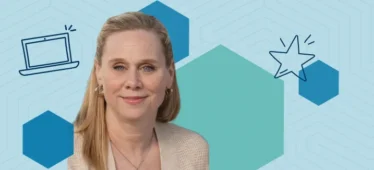Traditional loan products have long been a main source of revenue for banks and credit unions alike—these often include auto loans, mortgages, and small business loans. While these reliable loan classes produce a steady stream of earnings for financial institutions, they are often considered solely for their short-term yield. In today’s financial landscape, which has the majority of banks and credit unions focused on fortifying the deposits side of their balance sheets, a short-term yield mindset can actually be an impediment rather than a strength. It may be a good time to diversify with a different strategy.
By contrast, customer lifetime value (CLV) is a concept that considers a customer’s long-term value to an organization. This concept is widely leveraged across industries to focus and optimize go-to-market strategies on the most valuable customer segments and pare back the less valuable ones. By applying a CLV mindset to their loan landscape, today’s banking institutions can break out of the short-term yield trap and optimize their customer base for the long-term.
In today’s blog, we will discuss the shortcomings of a strict focus on traditional loan types, explore the importance of CLV lending strategies, and uncover the essential role of embedded lending in allowing banks and credit unions to reach their most valuable borrower segments.
Competing for traditional loan products may be limiting your bank or credit union
It’s not surprising that most financial institutions focus their lending strategies on a near-term mindset— chasing traditional products within current acquisition channels. These products are always highly competitive, and shoppers know it… driving rates down as price sensitivity is pushed by marketplace or other competitive pressures. Churning through these loan offerings can be profitable in the short term, but often lead to one-dimensional relationships with customers who are solely focused on repaying their debt and have little to no interest in engaging with the financial institution long-term for a wider product relationship. In other words, these transactions have low CLV, as borrowers leave the institution when their loan is repaid. With little focus on engaging and converting these borrowers to other service areas, many loans today neglect to prioritize winning customer relationships—including the acquisition of new depositors.
Applying a CLV mindset to your lending strategy
By viewing each customer as a long-term asset to their institution, lenders can develop more intentional lending strategies that satisfy customer needs over time, cultivate lasting loyalty, maximize cross-sell, and minimize churn. The best part? Loyal, long-term customers that engage with your bank or credit union across multiple service areas are often more profitable over time.
Let’s consider a hypothetical example:
Many lenders compete aggressively for auto loans, as consumer lending is dominated by automobile transactions in many credit unions. How does a consumer choose a lender? The goal of the transaction is to get out of the dealer as fast as possible… so the best rate wins.
There is another CLV use case here. Don’t start with auto loans…
Home improvement is a green pasture for many lenders, and it introduces new borrowers who own houses, have strong credit scores, and it’s not always APR driven. Choosing the platform that creates the convenience of an in-home transaction with a local lender, offered by a trustworthy merchant. The acquisition cost of this new borrower is actually profitable! And with strong tools to view credit reports of newly acquired borrowers, lenders can recapture an auto loan refinance as the next product, not the lead product. This use case has a higher probability for a two-product relationship in a much shorter time than traditional lending programs—and now lenders are building toward CLV.
The critical role of embedded lending
By providing financial institutions new data, new capabilities, and the ability to access new audience segments, embedded lending is a powerful tool in overcoming the short-term yield trap and pursuing increased CLV. Here’s why:
- Built-in context: Embedded lending provides banks and credit unions access to helpful data on their borrowers, empowering them to develop personalized strategies that maximize relevance and engagement.
- Convenience: By providing a positive and frictionless experience to borrowers, embedded lending cultivates loyalty and maximizes the probability a customer will engage with your institution across financial products.
- Cross-selling: Embedded lending enables the delivery of contextual cross-selling offers to boost your average CLV, such as incentives to open savings accounts or special rates on additional loan products.
- Borrowed brand equity: By enabling your financial institution to form partnerships with merchants who have a strong brand image and loyal customer communities, embedded lending transfers ‘borrowed brand equity’ to boost awareness and interest in your brand.
Ready to make the shift to a CLV mindset?
Are you looking to move beyond a short-term yield mindset and focus on lasting CLV? LoanStar is a perfect place to start. At LoanStar, we help financial institutions adopt, design and operationalize an embedded lending program that advances their goals for CLV. Our MerchantLinQ platform is turnkey, configurable, and ready to help your institution achieve new levels of success. Want to learn more? Schedule a demo today.



